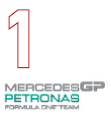The old hand meets the new kid on the block.


The old hand meets the new kid on the block.
Even as Formula One (F1) rolls into town for its ninth run, it looks like Singapore could soon play host to a second motorsports championship. Formula E, the world’s first all-electric car racing series, was conceived in 2012 to demonstrate the potential of sustainable mobility and is tentatively set to debut here next April. With the future of F1’s only night race up in the air after 2017, changes in the local motorsports scene are afoot. But will the quiet, green edition ever replace the excitement and sheer sexiness of a roaring supercar? You decide. Here, we suss out the differences between the two racing divisions.
IN A NUTSHELL

FIA F1 WORLD CHAMPIONSHIP:
Considered the pinnacle of motorsports, it has furthered automobile technology over the years, as advancements are later reflected in manufacturers’ road cars.

FIA FORMULA E (FE) CHAMPIONSHIP:
F1’s electric car equivalent. Inspired by FIA president Jean Todt, it is now regarded as the future of motorsports, as manufacturers look into going green with battery-operated cars and to improve electric car technology.
1ST RACE
MAY 13, 1950
Silverstone, United Kingdom. The first season had a seven-race calendar, with only one outside Europe in Indianapolis, US – a far cry from the current 21-race calendar that tours Europe, the Americas and Asia.
SEP 13, 2014
Beijing, China. Launched by the Chinese Federation of Automobile Sports, citing the country’s “commitment to automobile racing and environmental protection”. Given how car exhaust contributes to the city’s notorious smog, we say it’s a good place to start. The FE calendar has increased from 11 races in its debut season to 14, now.
TOP SPEED


ROAR
128 DECIBELS slightly louder than a thunderclap 80 DECIBELS average vacuum cleaner
HOW LONG IS A RACE?

TELEVISION VIEWERSHIP
2015 season
1.5 BILLION
61.5 MILLION
2014/2015 season
*Figures according to research firm Repucom
SECOND CAREERS
A third of FE’s current drivers crossed over from F1, including the champions of both previous seasons, Nelson Piquet Jr and Sebastian Buemi. We wait for the day Lewis Hamilton makes the switch
ON THE GRID
22 CARS IN 11 TEAMS COMPETE OVER 3 DAYS
18 CARS IN 9 TEAMS COMPETE IN 1 DAY
NOTABLE CRASHES
While the number of fatal accidents has decreased throughout the years, F1 is not without its dangerous side. The sport is considering added safety measures for 2017 after the death of promising French driver Jules Bianchi from injuries sustained at the 2014 Japanese Grand Prix, in a freak accident with a tractor that had been on track to clean up a previous crash.
Without casualties since its first season in 2014, the most significant crash to date occurred during the first ePrix in Beijing. A collision in the last corner of the final lap between race leaders Nick Heidfeld of Venturi Formula E and Nico Prost of Renault E.Dams launched the former into the air. Both drivers retired from the race, gifting the inaugural ePrix win to Lucas di Grassi and Abt Schaeffler Audi Sport.
TAKE A BREAK

At least one pit stop is made for fresh tyres, though strategy may dictate that teams run with two or more. Speed is of the essence, with teams using rivals’ pit stops as overtaking opportunities.

As the electric cars’ batteries run out midway, a mandatory pit stop is needed for a car change. Drivers return to the garage almost at the same time to hop out of their cars into a fully charged back-up, with no tyre changes or battery charge-ups allowed during the race.

German outfit Mercedes is the defending champion, with drivers Lewis Hamilton and Nico Rosberg placing first and second, respectively, last year. They currently lead the 2016 championship.

Italian luxury car manufacturer Ferrari shares a long history with F1, and is the only team to have competed in every F1 season since 1950. Current drivers: Sebastian Vettel and Kimi Raikkonen.

While considerably younger than both Mercedes and Ferrari, this Austrian team rose to winning the championship from 2010 to 2014, a mere five years from its 2005 debut. For 2016, Red Bull Racing’s engine is supplied by Renault.

The reigning champion since 2014, Renault E.Dams is a joint venture between top French single seat team Dams and Renault. The latter has been in the electric car market with all-electric model Zoe since 2012. The French manufacturer is also the only team to compete in both F1 and FE.

Abt Sportsline’s FE team is supported by German marques Volkswagen and Audi Sport, and was the winner of the inaugural ePrix in Beijing. Audi’s electric car venture stems from its e-tron series, a collection of electric and hybrid concept cars launched in 2009.

A partnership between French car maker Citroen’s luxury subbrand DS and British conglomerate Virgin, DS Virgin Racing finished third in the championship last season, winning its first ePrix in Buenos Aires. DS’ E-Tense, its electric sports car concept, is built off its work in FE.
THE GIMMICK (OR LACK THEREOF)
To make the championship more unpredictable, a double points opportunity was thrown in during the 2014 season’s final race. Due to fan discontent and its inability to influence the championship outcome (which had already been decided in earlier rounds), the double points system has since been scrapped.
FE engages fans through the Fanboost, in which the top three drivers as voted by fans receive an additional 100 kJ of energy in their second cars, to be used once, which can boost the car’s power between 180kW and 200kW (maximum power outage in the 2015/2016 season was 170kW.) Fans may vote via Formula E’s website and official social media accounts once a day during a 12-day voting period before the ePrix. It is basically a popularity game, with fan favourites often receiving the boosts.























